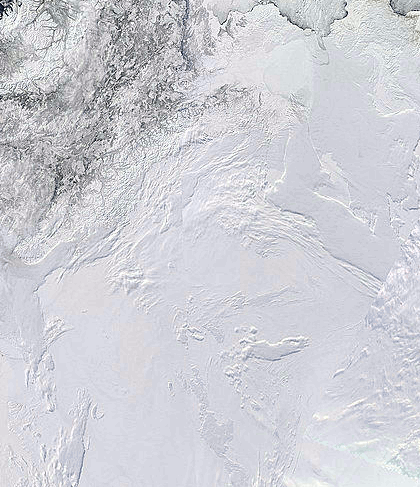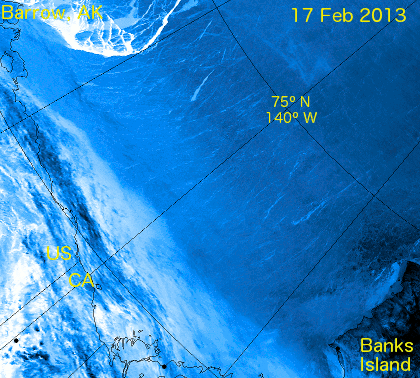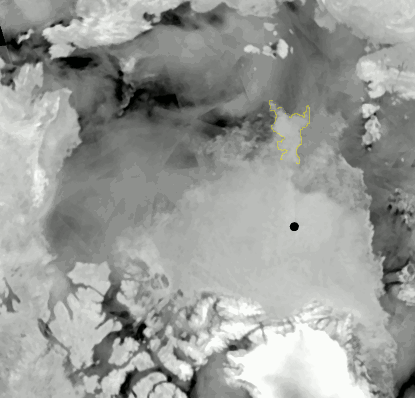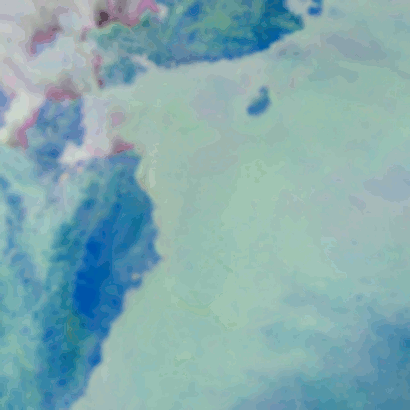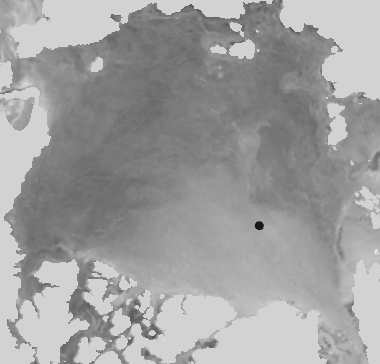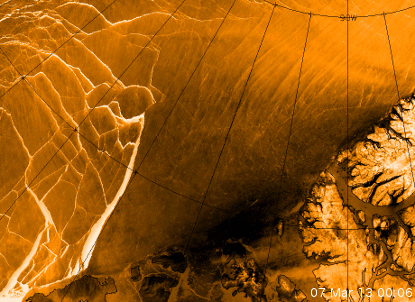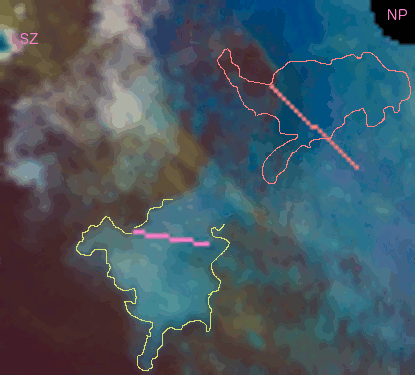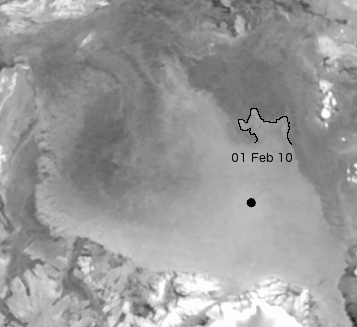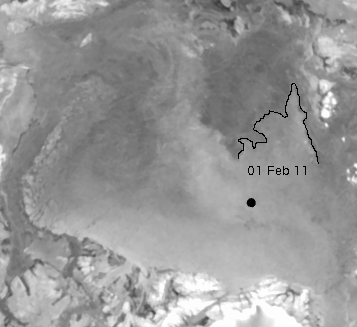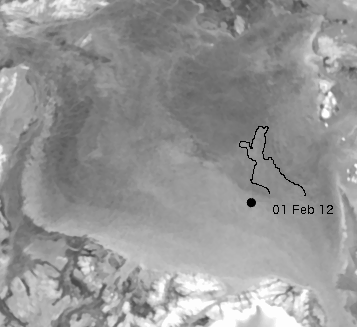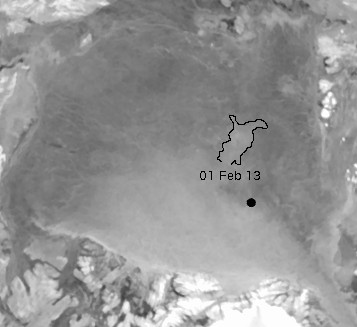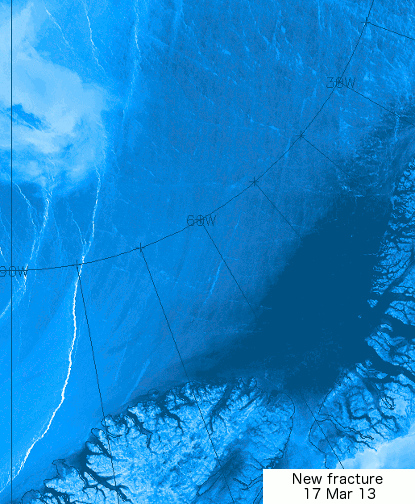Arctic: Difference between revisions
Tomemerald (talk | contribs) |
Tomemerald (talk | contribs) |
||
| (11 intermediate revisions by the same user not shown) | |||
| Line 1: | Line 1: | ||
== Arctic Ocean == | == Arctic Ocean == | ||
=== Population genomics overview === | |||
For purposes of comparative genomics in human medicine, it generally suffices to sequence a single individual in other species (or a few to be sure a particular informative polymorphism is representative). This sequencing is best conducted on a wild animal whose lineage has experienced continuous natural selection. | |||
Thus genomes of domesticated animals or inbred model species -- while they have their uses -- do not contribute to the evaluation of human coding allele variations (the main endeavor in personal genomics) because their provided 'support system' shields them from real-world tests of fitness. | |||
However rare wild animals present a similar issue -- when populations have gotten exceedingly low, the remaining isolated subpopulations become increasingly inbred and their founders may not have been representative of the original larger population to begin with. Back hybridization with species from which the target had already diverged -- for example grizzly with polar bear or wolf with coyote -- also destroys the record. | |||
Thus, there is increasing concern that the "sixth extinction crisis" may adversely impact the needs of human genomics for allele evaluation. Because the Arctic environment is the most rapidly changing place on earth under anthrogenic climate change, this article considers the effects of ice sheet melt on diminishing and fragmenting mammalian populations there as perhaps representative of many future situations of declining populations. | |||
=== Sea Ice loss: isolating effects on polar bears === | === Sea Ice loss: isolating effects on polar bears === | ||
The polar bear is highly suitable for population genomics as it is an iconic species at risk from climate change, with numerous sequencing projects already conducted on multiple bears, both living and fossil. | |||
As an obligate predator feeding primarily on hooded seals at their breathing holes in the ice, the polar bear is adapted to life on the ice pack and its floes -- a significant population cannot be sustained along the shore. | |||
Thus the steadily receding ice pack creates major issues, for example isolating the 4,000 bears on the Svalbard area from formerly a connected population in the Franz Josef. These bears can be predicted to come into increasing conflict with human settlers (not to mention each other), conflicts that will be resolved by shooting the bears. | |||
If the coming distribution of sea ice can be predicted, the separating populations of bears can be determined. From that, the degree of future inbreeding will follow, and so different homogenizations of population genomics. | |||
The first animation shows ASCAT radar imagery from 01 Dec 2012 to 22 Feb 2013. This is single channel radar at 5 Ghz, or grayscale. It could be mixed as an additional channel with Jaxa radar imagery to false-colorize it more informatively. | The first animation shows ASCAT radar imagery from 01 Dec 2012 to 22 Feb 2013. This is single channel radar at 5 Ghz, or grayscale. It could be mixed as an additional channel with Jaxa radar imagery to false-colorize it more informatively. | ||
| Line 28: | Line 48: | ||
[[Image:WindCrop3copy.gif]] | [[Image:WindCrop3copy.gif]] | ||
[[Image:RotatedScaledJaxaAscatBering2.gif]] | |||
[[Image:FinalTry50.gif]] | |||
[[Image:EllesmereCrackageddon6.gif]] | |||
[[Image:BeaufortRotation4.gif]] | |||
[[Image:NaresH2.gif]] | |||
[[Image:Jaxa3rdcropPicker415d.gif]] | |||
[[File:Ascat2010.gif]] | |||
[[File:Ascat2011.gif]] | |||
[[File:Ascat2012.gif]] | |||
[[File:Ascat2013.gif]] | |||
[[File:18MarMoveEllsemere5.gif]] | |||
[[Category:Comparative Genomics]] | [[Category:Comparative Genomics]] | ||
Latest revision as of 20:45, 18 March 2013
Arctic Ocean
Population genomics overview
For purposes of comparative genomics in human medicine, it generally suffices to sequence a single individual in other species (or a few to be sure a particular informative polymorphism is representative). This sequencing is best conducted on a wild animal whose lineage has experienced continuous natural selection.
Thus genomes of domesticated animals or inbred model species -- while they have their uses -- do not contribute to the evaluation of human coding allele variations (the main endeavor in personal genomics) because their provided 'support system' shields them from real-world tests of fitness.
However rare wild animals present a similar issue -- when populations have gotten exceedingly low, the remaining isolated subpopulations become increasingly inbred and their founders may not have been representative of the original larger population to begin with. Back hybridization with species from which the target had already diverged -- for example grizzly with polar bear or wolf with coyote -- also destroys the record.
Thus, there is increasing concern that the "sixth extinction crisis" may adversely impact the needs of human genomics for allele evaluation. Because the Arctic environment is the most rapidly changing place on earth under anthrogenic climate change, this article considers the effects of ice sheet melt on diminishing and fragmenting mammalian populations there as perhaps representative of many future situations of declining populations.
Sea Ice loss: isolating effects on polar bears
The polar bear is highly suitable for population genomics as it is an iconic species at risk from climate change, with numerous sequencing projects already conducted on multiple bears, both living and fossil.
As an obligate predator feeding primarily on hooded seals at their breathing holes in the ice, the polar bear is adapted to life on the ice pack and its floes -- a significant population cannot be sustained along the shore.
Thus the steadily receding ice pack creates major issues, for example isolating the 4,000 bears on the Svalbard area from formerly a connected population in the Franz Josef. These bears can be predicted to come into increasing conflict with human settlers (not to mention each other), conflicts that will be resolved by shooting the bears.
If the coming distribution of sea ice can be predicted, the separating populations of bears can be determined. From that, the degree of future inbreeding will follow, and so different homogenizations of population genomics.
The first animation shows ASCAT radar imagery from 01 Dec 2012 to 22 Feb 2013. This is single channel radar at 5 Ghz, or grayscale. It could be mixed as an additional channel with Jaxa radar imagery to false-colorize it more informatively.
It shows a block of newish ice (initial yellow outline) pushing down on the multi-year ice and squeezing a good part of it out the Fram Strait (final purple outline). There seems to be good export action out the Bering Strait as well.
It can be seen that the Svalbard region, home of some 4,000 polar bears, has minimal sea ice this winter. This will lead to bears being concentrated in a small area as they cannot hunt seals from pack ice, which in turn will lead to conflicts.
Genetic isolation of the (reduced) bear population would be unfavorable for long-term polar bear survival. Hybridization with brown bears will not preserve the many Arctic adaptations of polar bears. Thus the question revolves in the short term around the extent of sea ice in the summer of 2013.
The second animation shows that this year's breakup of the ice pack in the Beaufort Sea is very unusual for mid-winter, perhaps unprecedented in recent millenia. In the spring of 2012 something rather similar happened but much late, in April.
The animation covers 12 March to 17 June 2012 with Terra satellite visible imagery at 4 km resolution. The event begins above the Bering Straits, but it really takes off on March 22 and by April 9 begins to strongly resemble mid-Feb 2013. On April 17 it has reached its geographic terminus, Banks Island.
If taken as a simplistic predictor of the 2013 melt season, that is 51 days ahead of last season. Early open water will greatly affect polar bears, as well as walrus.
The third animation shows unprecented crack break-up in February. The crack system is spreading eastward at 2 miles an hour and has now hit Banks Island

